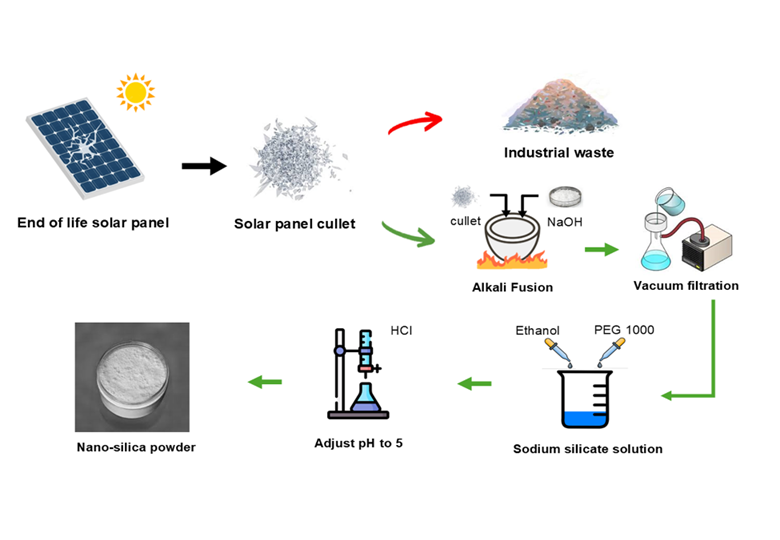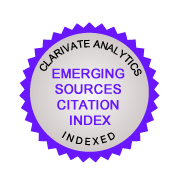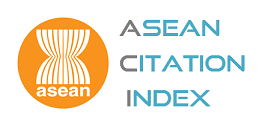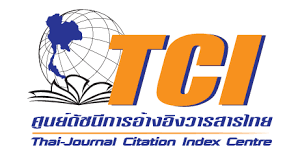Synthesis and characterization of silica nanoparticles from solar panel glass cullet
DOI:
https://doi.org/10.55713/jmmm.v35i4.2448Keywords:
Silica nanoparticles, solar panel recycling, alkali fusion, glass cullet, polyethylene glycolAbstract
The rapid growth of solar energy as a renewable resource has led to a significant increase in discarded solar panels. Recycling their glass components, especially fine cullet fragments, remains a major challenge due to impurity levels and processing limitations. This study proposes a sustainable approach to recycle solar panel glass cullet into high-purity silica nanoparticles using alkali fusion followed by acid precipitation. Process conditions including cullet to NaOH ratio, fusion temperature, and surfactant addition were optimized. The highest silica yield of 60.26% was achieved at a 1:1.4 cullet to NaOH ratio and 500℃. Polyethylene glycol (PEG 1000) was used as a surfactant to reduce agglomeration and enhancing surface characteristics. BET analysis showed that PEG addition increased the specific surface area to 372.34 m2∙g‒1 and formed a compact mesoporous structure with an average pore size of 8.91 nm. In comparison, samples without PEG exhibited a larger pore size of 12.36 nm and a lower surface area of 360.24 m2∙g‒1. EDX confirmed the high purity of the synthesized silica, with 95.12% SiO2. These findings demonstrate a practical and environmentally beneficial method to convert problematic solar panel waste into valuable nanomaterials, supporting sustainable resource recovery and circular economy goals.
Downloads
References
REN21, "Renewables 2023 Global Status Report," REN21 Secretariat, 2023.
IRENA, "Renewable Power Generation Costs in 2021," International Renewable Energy Agency, 2022.
IEA, "Share of renewable electricity generation," International Energy Agency, 2024.
D. C. Jordan, and S. R. Kurtz, "Photovoltaic degradation rates—an analytical review," Progress in Photovoltaics: Research and Applications, vol. 21, no. 1, pp. 12–29, 2013. DOI: https://doi.org/10.1002/pip.1182
S. Weckend, A. Wade, and G. Heath, "End-of-Life Management: Solar Photovoltaic Panels," IRENA and IEA-PVPS, 2016. DOI: https://doi.org/10.2172/1561525
V. Fiandra, L. Sannino, C. Andreozzi, and G. Graditi, "End-of-life of silicon PV panels: A sustainable materials recovery process," Waste Management, vol. 84, pp. 91–101, 2019.
R. Deng, N. L. Chang, Z. Ouyang, and C. M. Chong, "A techno-economic review of silicon photovoltaic module recycling," Renewable and Sustainable Energy Reviews, vol. 109, pp. 532–550, 2019. DOI: https://doi.org/10.1016/j.rser.2019.04.020
C. E. L. Latunussa, F. Ardente, G. A. Blengini, and L. Mancini, "Life Cycle Assessment of an innovative recycling process for crystalline silicon photovoltaic panels," Solar Energy Materials & Solar Cells, vol. 156, pp. 101–111, 2016. DOI: https://doi.org/10.1016/j.solmat.2016.03.020
J. K. Choi, and V. Fthenakis, "Crystalline silicon photovoltaic recycling planning: macro and micro perspectives," Journal of Cleaner Production, vol. 66, pp. 443–449, 2014. DOI: https://doi.org/10.1016/j.jclepro.2013.11.022
P. Dias, S. Javimczik, M. Benevit, and H. Veit, "Recycling WEEE: Extraction and concentration of silver from waste crystalline silicon photovoltaic modules," Waste Management, vol. 57, pp. 220–225, 2017. DOI: https://doi.org/10.1016/j.wasman.2016.03.016
I. D'Adamo, M. Miliacca, and P. Rosa, "Economic feasibility for recycling of waste crystalline silicon photovoltaic modules," International Journal of Photoenergy, vol. 2017, Art. no. 4184676, pp. 1–6, 2017. DOI: https://doi.org/10.1155/2017/4184676
M. M. Lunardi, J. P. Alvarez-Gaitan, J. I. Bilbao, and R. Corkish, "A review of recycling processes for photovoltaic modules," Solar Panels and Photovoltaic Materials, vol. 1, pp. 9–27, 2018. DOI: https://doi.org/10.5772/intechopen.74390
A. Theerapapvisetpong and S. Nilpairach, "Utilization of glass cutting sludge and sanitary ware sludge in ceramic pressed bodies," Key Engineering Materials, vol. 659, pp. 169–174, 2015. DOI: https://doi.org/10.4028/www.scientific.net/KEM.659.169
F . Matteucci, M. Dondi, and G. Guarini, "Effect of soda-lime glass on sintering and technological properties of porcelain stoneware tiles," Ceramics International, vol. 28, pp. 873–880, 2002. DOI: https://doi.org/10.1016/S0272-8842(02)00067-6
A. Tucci, L. Esposito, E. Rastelli, C. Palmonari, and E. Rambaldi, "Use of soda-lime scrap-glass as a fluxing agent in a porcelain stoneware tile mix," Journal of the European Ceramic Society, vol. 24, pp. 83–92, 2004. DOI: https://doi.org/10.1016/S0955-2219(03)00121-3
N. Marinoni, D. D'Alessio, V. Diella, A. Pavese, and F. Francescon, "Effects of soda-lime-silica waste glass on mullite formation kinetics and micro-structures development in vitreous ceramics," Journal of Environmental Management, vol. 124, pp. 100–107, 2013. DOI: https://doi.org/10.1016/j.jenvman.2013.02.048
M. Dondi, G. Guarini, M. Raimondo, and C. Zanelli, "Recycling PC and TV waste glass in clay bricks and roof tiles," Waste Management, vol. 29, pp. 1945–1951, 2009. DOI: https://doi.org/10.1016/j.wasman.2008.12.003
V. Fiandra, L. Sannino, C. Andreozzi, and G. Graditi, "End-of-life of silicon PV panels: A sustainable materials recovery process," Waste Management, vol. 84, pp. 91–101, 2019. DOI: https://doi.org/10.1016/j.wasman.2018.11.035
Y. Jiang, T. C. Ling, C. Shi, and S. Y. Pan, "Characteristics of steel slags and their use in cement and concrete—A review," Resources, Conservation & Recycling, vol. 136, pp. 187–197, 2018. DOI: https://doi.org/10.1016/j.resconrec.2018.04.023
M. Mirzahosseini, and K. A. Riding, "Effect of curing temperature and glass type on the pozzolanic reactivity of glass powder," Cement and Concrete Research, vol. 58, pp. 103–111, 2015. DOI: https://doi.org/10.1016/j.cemconres.2014.01.015
A. M. Rashad, "Recycled waste glass as fine aggregate replacement in cementitious materials based on Portland cement," Construction and Building Materials, vol. 72, pp. 340-357, 2014. DOI: https://doi.org/10.1016/j.conbuildmat.2014.08.092
Z. Chen, J. S. Li, and C. S. Poon, "Combined use of sewage sludge ash and recycled glass cullet for the production of concrete blocks," Journal of Cleaner Production, vol. 171, pp. 1447–1459, 2018. DOI: https://doi.org/10.1016/j.jclepro.2017.10.140
Y. Jani, and W. Hogland, "Waste glass in the production of cement and concrete—A review," Journal of Environmental Chemical Engineering, vol. 2, no. 3, pp. 1767–1775, 2014. DOI: https://doi.org/10.1016/j.jece.2014.03.016
A. Khmiri, B. Samet, and M. Chaabouni, "A cross mixture design to optimise the formulation of a ground waste glass blended cement," Construction and Building Materials, vol. 28, no. 1, pp. 680–686, 2012. DOI: https://doi.org/10.1016/j.conbuildmat.2011.10.032
J. X. Lu, and C. S. Poon, "Use of waste glass in alkali activated cement mortar," Construction and Building Materials, vol. 160, pp. 399–407, 2018. DOI: https://doi.org/10.1016/j.conbuildmat.2017.11.080
Y. Shao, T. Lefort, S. Moras, and D. Rodriguez, "Studies on concrete containing ground waste glass," Cement and Concrete Research, vol. 30, no. 1, pp. 91–100, 2000. DOI: https://doi.org/10.1016/S0008-8846(99)00213-6
W. A. A. Sudjarwo, and M. M. F. Bee, "Synthesis of silica gel from waste glass bottles and its application for the reduction of free fatty acid (FFA) on waste cooking oil," AIP conference proceedings, vol. 1855, no. 1, p. 020019, 2017. DOI: https://doi.org/10.1063/1.4985464
Q. Guo, D. Huang, X. Kou, W. Cao, L. Li, L. Ge, and J. Li, "Synthesis of disperse amorphous SiO2 nanoparticles via sol–gel process," Ceramics International, vol. 43, pp. 192–196, 2017.
A. Akbari, R. Yegani, and B. Pourabbas, "Synthesis of poly (ethylene glycol) (PEG) grafted silica nanoparticles with a minimum adhesion of proteins via one-pot one-step method," Colloids and Surfaces A: Physicochemical and Engineering Aspects, vol. 484, pp. 206–215, 2015. DOI: https://doi.org/10.1016/j.colsurfa.2015.07.042
S. Hussain, R. K. Singh, A. Kumar, S. S. Kumar, N. Kumar, G. Kumar, and A. K. Aman, “Natural silica nanoparticles from agricultural waste rice husk and its magnetic composites for its possible applications in semiconductor, catalytic activity and biomedical science,” Current Natural Sciences & Engineering, vol. 2, no. 2, pp. 638–648, 2025. DOI: https://doi.org/10.63015/5n-2459.2.2
S. K. Natarajan, M. A. Sadiq, and M. A. M. Soudagar, "Utilization of waste glass powder in concrete," Procedia Environmental Sciences, vol. 35, pp. 579–588, 2016.
F. Engström, D. Adolfsson, C. Samuelsson, Å. Sandström, and B. Björkman, "A study of the solubility of pure slag minerals," Minerals Engineering, vol. 41, pp. 46–52, 2013. DOI: https://doi.org/10.1016/j.mineng.2012.10.004
Z. Asadi, and R. Norouzbeigi, "Synthesis of colloidal silica nanoparticles from waste glass powder as a low cost precursor," Ceramics International, vol. 44, no. 17, pp. 22692–22697, 2018 DOI: https://doi.org/10.1016/j.ceramint.2018.09.050
I. A. Rahman, and V. Padavettan, "Synthesis of silica nano-particles by sol-gel: size-dependent properties, surface modification, and applications in silica-polymer nanocomposites—A review," Journal of Nanomaterials, vol. 2012, p. 132424, pp. 1–15, 2012. DOI: https://doi.org/10.1155/2012/132424
Q. Guo, D. Huang, X. Kou, W. Cao, L. Li, L. Ge, and J. Li, "Synthesis of disperse amorphous SiO2 nanoparticles via sol–gel process," Ceramics International, vol. 43, no. 1, pp. 192–196, 2017. DOI: https://doi.org/10.1016/j.ceramint.2016.09.133
R. Ellerbrock, M. Stein, and J. Schaller, "Comparing amorphous silica, short-range-ordered silicates and silicic acid species by FTIR," (in eng), Scientific Reports, vol. 12, no. 1, p. 11708, 2022. DOI: https://doi.org/10.1038/s41598-022-15882-4
S. Saravanan, and R. S. Dubey, “Synthesis of SiO2 nanoparticles by sol-gel method and their optical and structural properties,” Romanian Journal of Information Science and Technology, vol. 23, pp. 105–112, 2020.
S. K. Malpani, and D. Goyal, "Synthesis, analysis, and multi-faceted applications of solid wastes-derived silica nanoparticles: a comprehensive review (2010–2022)," Environmental Science and Pollution Research, vol. 30, no. 11, pp. 28321–28343, 2023. DOI: https://doi.org/10.1007/s11356-022-23873-1
F. Bondioli, V. Cannillo, E. Fabbri, and M. Messori, "Epoxy‐silica nanocomposites: Preparation, experimental characterization, and modeling," Journal of Applied Polymer Science, vol. 97, pp. 2382–2386, 2005. DOI: https://doi.org/10.1002/app.21854
S. Liu, X. Chen, W. Ai, and C. Wei, "A new method to prepare mesoporous silica from coal gasification fine slag and its application in methylene blue adsorption," Journal of Cleaner Production, vol. 212, pp. 1062–1071, 2019. DOI: https://doi.org/10.1016/j.jclepro.2018.12.060
D. Kaliannan, S. Palaninaicker, V. Palanivel, M. A. Mahadeo, B. N. Ravindra, and S. Jae-Jin, "A novel approach to preparation of nano-adsorbent from agricultural wastes (Saccharum officinarum leaves) and its environmental application," Environmental Science and Pollution Research, vol. 26, no. 6, pp. 5305–5314, 2019. DOI: https://doi.org/10.1007/s11356-018-3734-z

Downloads
Published
How to Cite
License
Copyright (c) 2025 Journal of Metals, Materials and Minerals

This work is licensed under a Creative Commons Attribution-NonCommercial-NoDerivatives 4.0 International License.
Authors who publish in this journal agree to the following terms:
- Authors retain copyright and grant the journal right of first publication with the work simultaneously licensed under a Creative Commons Attribution License that allows others to share the work with an acknowledgment of the work's authorship and initial publication in this journal.
- Authors are able to enter into separate, additional contractual arrangements for the non-exclusive distribution of the journal's published version of the work (e.g., post it to an institutional repository or publish it in a book), with an acknowledgment of its initial publication in this journal.












